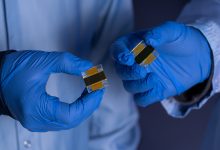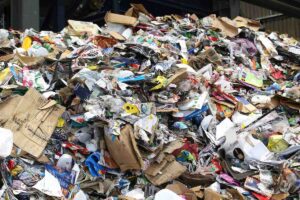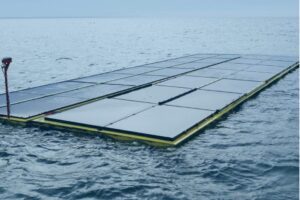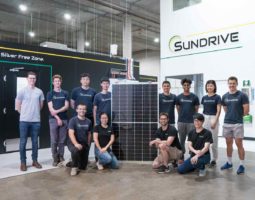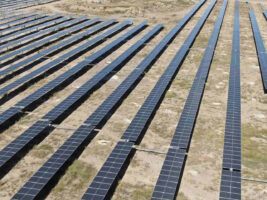Researchers from the Australian National University have set a new solar record, notching up the highest ever efficiency levels for perovskite cells above a certain size, at 21.6 per cent.
The ANU-led team has been working on the technology with the backing of the Australian Renewable Energy Agency, in a bid make solar generation even cheaper and more efficient, through a combination of silicon with perovskite.
The researchers say that their take on perovskite – which combines abundant and cheap chemical elements including carbon, hydrogen, nitrogen, iodine and lead – can convert 21.6 per cent of the sunlight hitting the cells into energy, and produce 216 watts of electrical power per square metre.
The team’s ultimate plan is to sandwich the highly efficient perovskite with silicon in a tandem solar cell arrangement that could boost overall efficiency well beyond what is possible with silicon by itself.
“With perovskites the efficiency is now competitive, and cost is one of the big selling points,” said Associate Professor Thomas White.
“The real challenge now is making them stable enough to be used on a rooftop for example, where they have to be able to last 25 to 30 years in extreme temperatures. Silicon, meanwhile, is expected to hit the upper limits of its efficiency sometime within the coming decade.
“To be able to make a really good tandem solar cell you’ve got to have both of your cells operating as efficiently as possible,” Professor White said.
“Because silicon can’t get much better, we’ve been focusing on the perovskite half.”
A key contributor to the record efficiency result is a novel nanostructured material developers by co-researcher Dr Jun Peng.
“An efficient solar cell must be able to produce both high voltage and high current,” said Dr Peng.
“It can be difficult to achieve both at the same time, but the nanostructured layer in our cells makes this possible.”
Professor White notes, however, that the efficiency levels achieved by the perovskite cells in the lab won’t necessarily translate out in the field.
“When they’re very small it’s difficult to measure them accurately, and it’s not necessarily representative of what would happen if you scaled up,” he said.
“So our result is the highest on a scale that many consider the minimum – one square centimetre.”
The team’s results have also been independently verified by the CSIRO Photovoltaics Performance Lab, the only laboratory in the Southern Hemisphere accredited to certify solar cell efficiencies to international standards.
As we reported here, perovskite has been one of the great hopes of next-gen solar technology for some years now, with companies like Oxford PV using it to achieve a world record 27.3 per cent conversion efficiency for a single-junction silicon solar cell.
But the quest has claimed some scalps, too. Last year one of Australia’s longest running solar technology developers, GreatCell Solar, called in voluntary administrators after failing to find funds to support a $25 million project to prove its technology.
GreatCell, originally known as DyeSol, was investigating the potential of a number of 3rd generation solar PV technologies, including perovskite cells. It spent more than $130 million on research, and raised more than $100 million from investors, and was seeking more.
One of the key problems preventing progress with perovskite solar cells has been their stability, particularly when exposed to heat and moisture.

